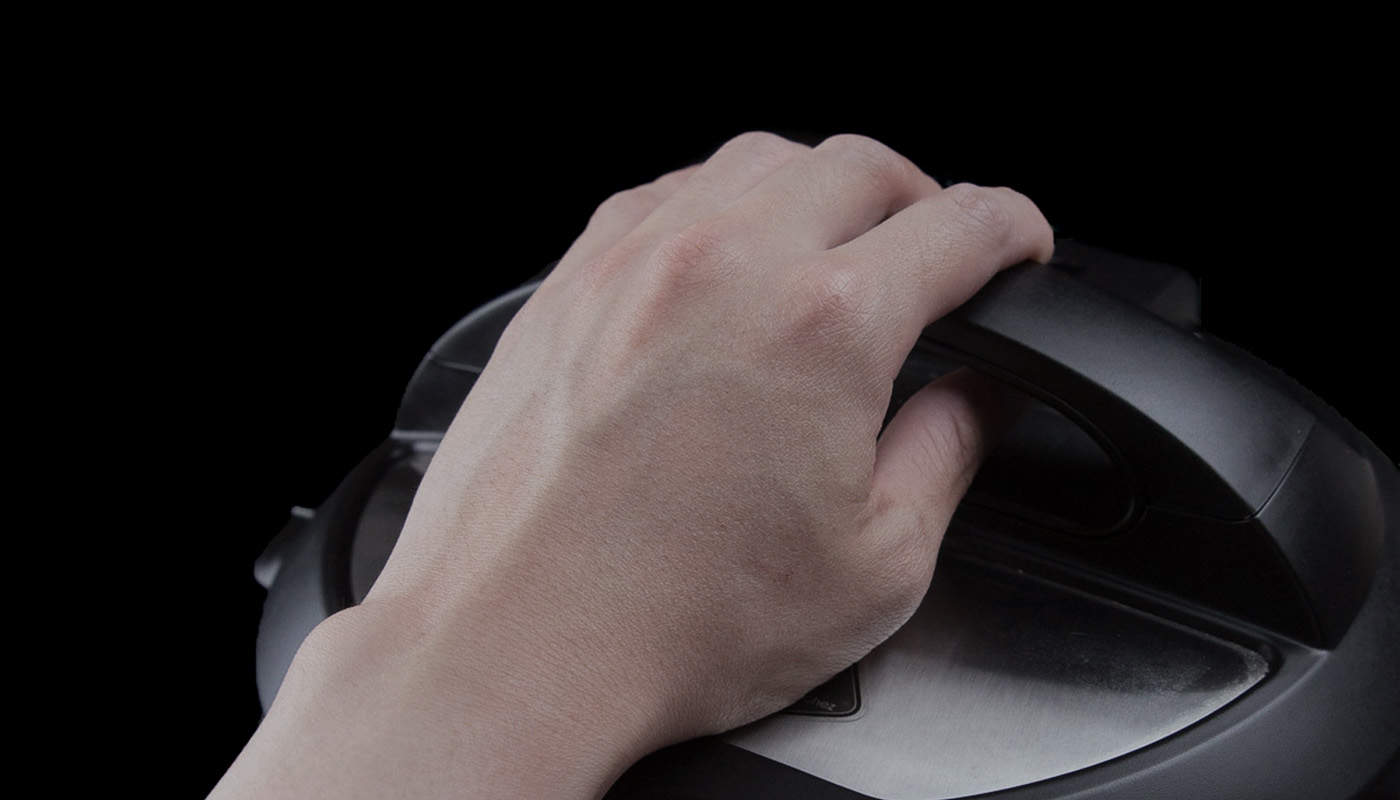A timely push on the Instant Pot lid seems like a good idea as it seems to immediately popup the floating valve, seal the pressure cooker, and speed up the whole cooking process!

The metal pin is dancing up and down…
This is so tempting.
Let’s push down the pressure cooker lid to seal it all up!
A Major Reason Why Food is Undercooked
Let me tell you this. Pushing down the Instant Pot lid is actually one of the top reasons why your food comes out undercooked in the Instant Pot Electric Pressure Cooker.
Without going all nerdy right off the bat, let me explain this to you in human language.
If the lid is pushed down to force seal the Instant Pot, air will be trapped inside the pot. Since air has a lower heat capacity than steam, it will reduce the cooking temperature.
Let’s Look at Some Experiment Data
We did 9 tests with temperature trackers inside 5 different models of Instant Pot Electric Pressure Cookers. The results support this theory.
Experiment Results from Instant Pot DUO60 Version 2
Model: Instant Pot IP-DUO60 V2 Electric Pressure Cooker
Method: Temperature trackers directly submerged in 2 cups of water
Cooking Time: High Pressure for 5 minutes
Black color (Peaked at 241°F/116°C) – Naturally sealed
Blue color (Peaked at 237°F/114°C) – Force sealed by pushing the Instant Pot lid down while steam is floating through the floating valve
Red color (Peaked at 230°F/110°C) – Force sealed immediately when placing the Instant Pot lid on
Experiment Results from Instant Pot Smart
Model: Instant Pot Smart Electric Pressure Cooker
Method: Temperature trackers placed on a trivet in 1 cup of water
Cooking time: High Pressure for 10 minutes
Black color (Peaked at 231°F/110°C) – Naturally sealed
Blue color (Peaked at 224°F/107°C) – Force sealed by pushing the Instant Pot lid down while steam is floating through the floating valve
Red color (Peaked at 200°F/93°C) – Force sealed immediately when placing the Instant Pot lid on
Conclusion from the Instant Pot Lid Experiments
If we calculate the PSI based on the peaked steam temperature at 241°F/116°C, 237°F/114°C, and 230°F/110°C
The psi is 10.64, 9.04, and 6.09 respectively.
We can conclude the following with the experiment data we gathered from the 9 tests:
- More Trapped Air = Lower Cooking Temperature: The more air gets trapped inside the Instant Pot, the lower the cooking temperature.
- More Significant Impact When Cooking On a Trivet: The cooking temperature reduces more significantly when food is on a trivet and not submerged in the water (i.e steaming).
Solutions to Prevent This Mistake?
- Be Patient & Seal Naturally: Allow the pressure cooker to seal naturally by not forcing or pushing down the Instant Pot lid.
- Begin in Venting Position: Always make sure the Venting Knob is in the Venting Position when putting on the Instant Pot lid. Then, turn the Venting Knob to the Sealing Position after closing the Instant Pot lid.
- Why? With the Venting Knob in Sealing Position, the floating valve may popup immediately if there is hot liquid in the Instant Pot. So, it’s a good habit to have the Venting Knob in the Venting Position first. 🙂
All Our Pressure Cooker Recipes
*Disclosure: We are an Amazon Influencer/Amazon Associate. This means that if you decide to purchase items or services on Amazon through our links on Pressure Cook Recipes to Amazon, Amazon will send a small commission to us at no additional costs to you. Thank you!





